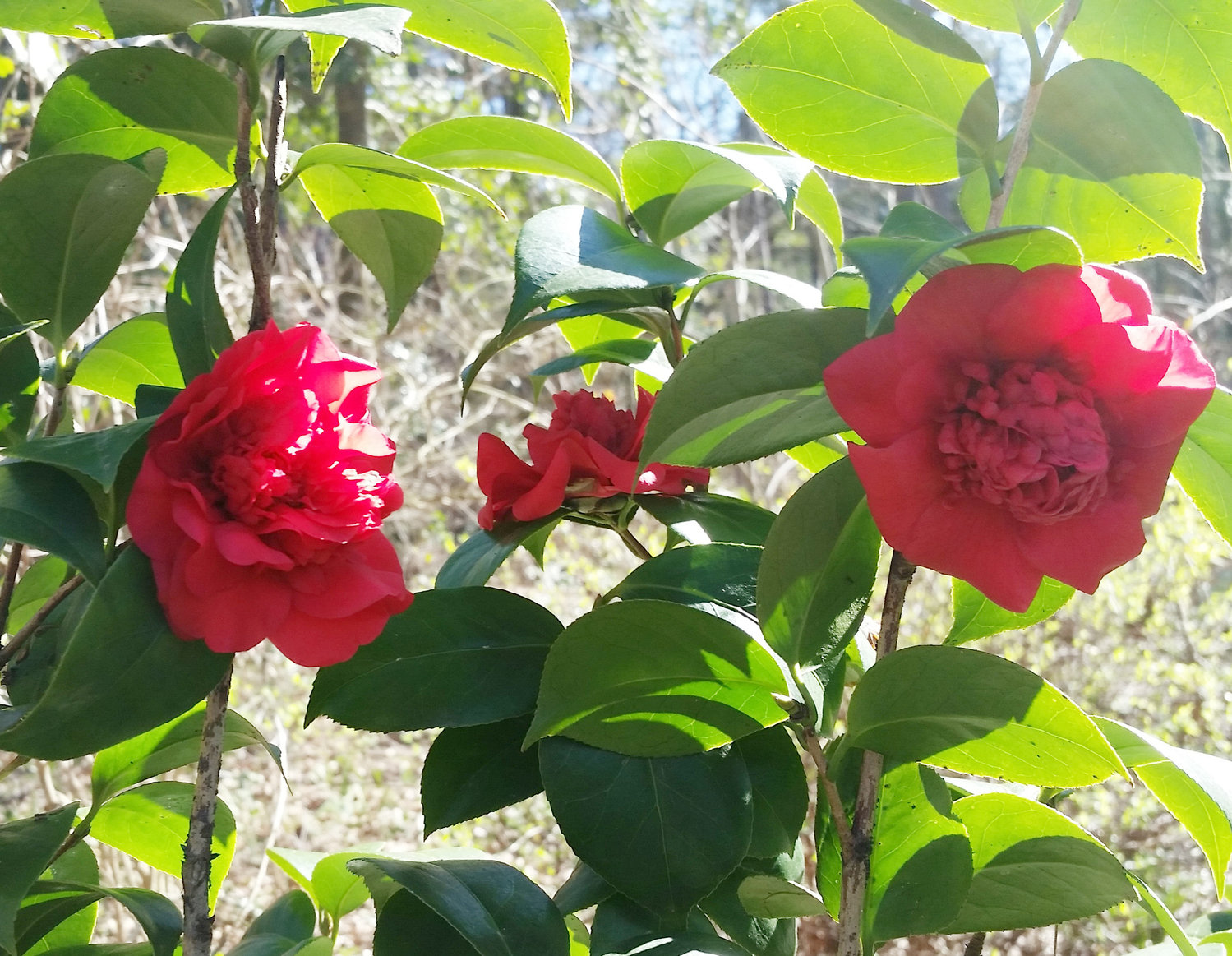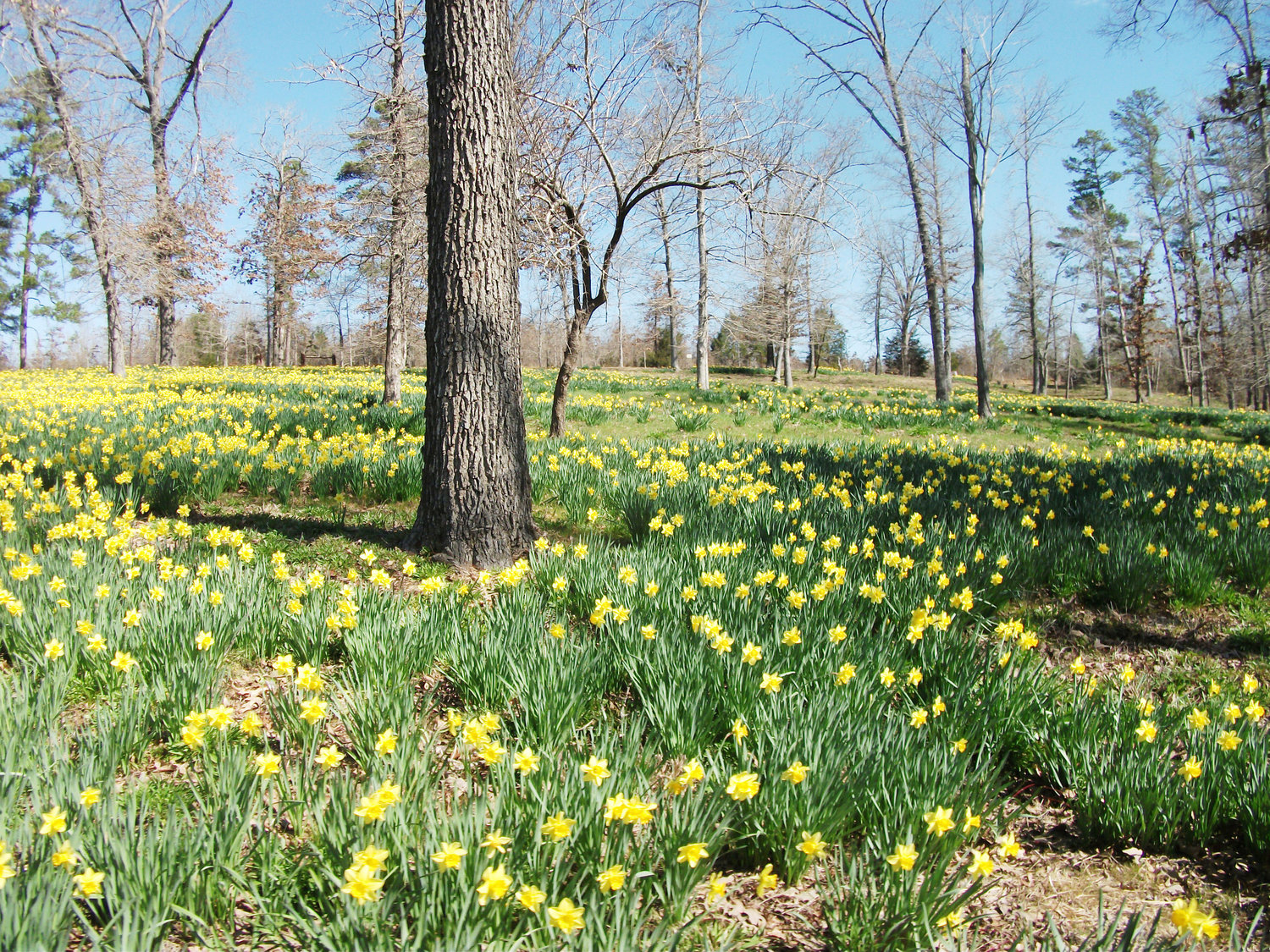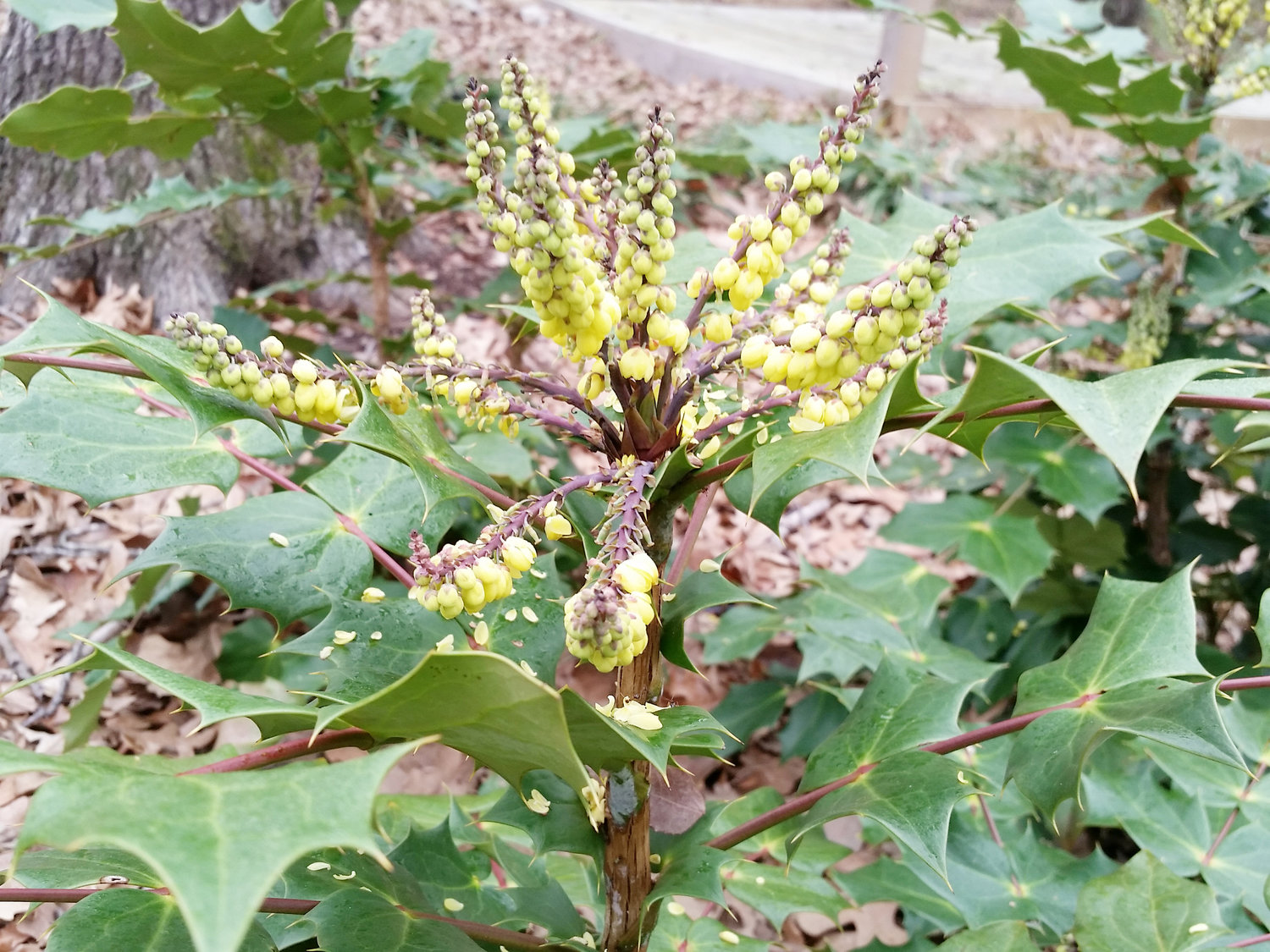When attempting four seasons of blooms in East Texas gardens, winter can be a challenge. Annuals like pansies and snapdragons can provide winter color, but a very cold spell like the one we had in January can really be a setback for these plants. It’s also a lot of work to plant seasonal color in your beds, replacing the plants several times a year. There IS a way to have winter color that returns every year, and it’s easier than you may think!
Bulbs like daffodils (narcissus) are easy-care plants that form the base of winter garden blooms. Paperwhites start flowering in December, and daffodils continue to bloom from January through March. Some of my favorites are the heirloom bulbs like Seventeen Sisters (with a bouquet of blooms on each stalk) found at old home sites, and the tiny but fragrant yellow jonquils and Lent lilies found along many Wood County roadsides. Daffodil buds easily recover from temperatures down to the mid-20s, but suffer when we have a really cold spell in the teens; later-blooming varieties will be unaffected. Pest-free, daffodils need full sun while they’re growing, and not much else. The only trick to daffodils is to let the foliage die back naturally – don’t trim, tie, or braid – so the bulbs can regenerate for next year’s blooms. Make a note to buy and plant these bulbs next fall.
In mild winters, tender perennials like gerber daisies will continue to bloom, but even in the coldest of winters, the Lenten roses (Hellebores) bloom in shades of green, white, mauve, and even black. Use these evergreen perennials in your shade garden, as summer sun can burn the leaves. You might find seedlings coming up around the plants, which can form almost a groundcover under your trees.
January and February are the months that the Japanese camellia steals the show. These camellias have large, glossy, deep green leaves that provide a backdrop to the full blooms, in colors from white to pink to red (even the bloom of the Purple Dawn variety is rose-red with lavender overtones). My gardening friends in the DFW area are frustrated in their attempts to grow camellias, which are basically effortless here. Grow in partial shade and mulch over the roots, then stand back and let this “rose of winter” grow - varieties can reach 6-15’ in height. Provide supplemental water till established.
One of my favorite shrubs that blooms in winter is winter honeysuckle, a semi-evergreen shrub with blue-green leaves than will grow in sun to part shade. One of the common names for this shrub is ‘sweet breath of spring’ - the small creamy-white flowers that line its branches have an amazing lemony fragrance. In my yard it blooms from late November until March, and provides winter forage for honeybees. Grow near a deck or walkway to take full advantage of the fragrance.
Leather-leaf mahonia is a deer-resistant shrub that grows in full shade. Each winter it bears large clusters of sweet smelling yellow flowers loved by bees, followed by gray-blue berries that give it one of its common names, Oregon grape. The coarse-textured leaves are prickly – it’s not one you want to brush against - so grow away from a path.
Another ‘prickly’ shrub is flowering quince (locally called “Japonica”) - the first of the ‘spring’ shrubs to bloom in East Texas – in fact it’s in bloom now. You’ll see its flowers of scarlet, coral, or white on shrubs that can easily grow to 6’ in height and width. Grow it in full sun to part shade; its thorny branches suggest a location back from a path. Once its blooms are finished it will fade into the landscape till next year, when its pop of color will remind you why you grow it.
Finally, the last shrub I wanted to mention is Florida sunshine anise shrub. We feature this evergreen in two gardens at the Quitman Arboretum, and you may remember it from the photo in last month’s article. This shade-loving shrub has chartreuse foliage in the summer, but turns golden in the winter, like a beacon, that certainly provides winter color.
Add some of these plants to your garden this spring, and you’ll have color to lift your spirits next winter.
About the author: Lin is a Texas Master Gardener in Wood County. Email your gardening questions to her at txgardengal@gmail.com. To learn hands-on techniques, join her and other volunteers each Wednesday morning at 9, at the Quitman Arboretum and Botanical Gardens.











